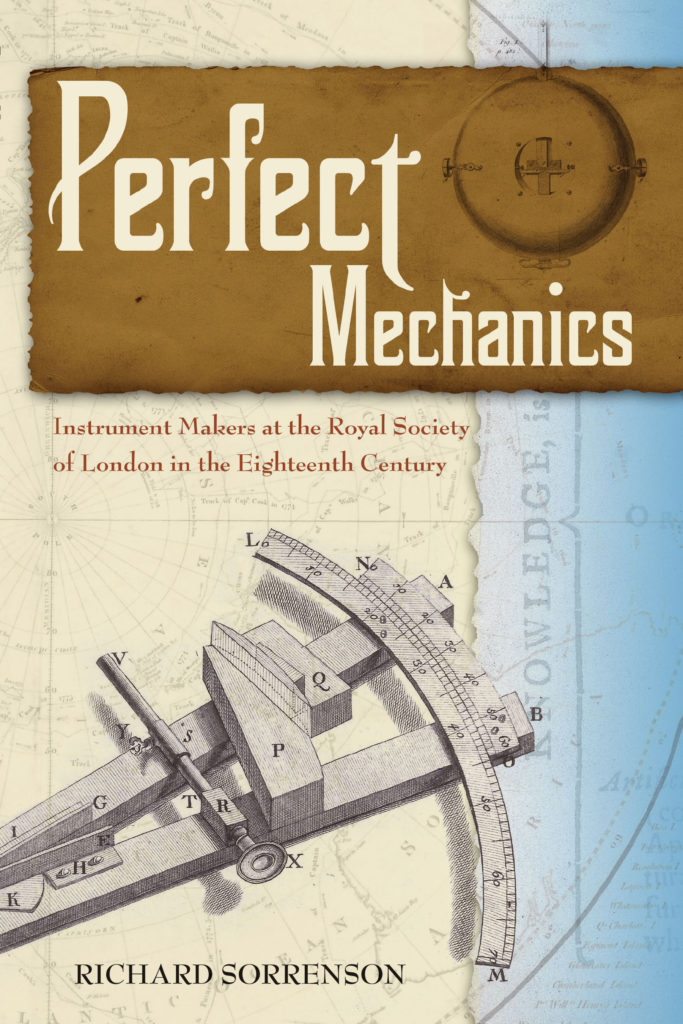In this engaging and lively book, Richard Sorrenson ventures into the bustling world of 18th-century London’s scientific instrument makers who, by virtue of their mastery and reputation, sprung themselves into that most gentlemanly of scientific bodies, the Royal Society. Balanced at the intersection of commerce, science, exploration, and empire, instrument makers like George Graham, John Dollond, and Jesse Ramsden combined their mathematical knowledge and their investigations into the physical qualities of the instruments’ materials to construct ever more precise clocks, quadrants, and telescopes. Sorrenson captures the excitement of Georgian “big science” and the starring roles played by London instrument makers in the scientific expeditions to measure the shape of the earth, to find and map unknown lands in the Pacific, and to explore the heavens. Yet these indispensible practitioners of “mixed mathematics,” recognized and honored by the Royal Society through fellowship and the awarding of the Copley Medal, became increasingly marginalized by the gentlemanly FRS after 1800 and the essential tensions between commerce and science, mechanical and craft production, and social classes brought an abrupt halt to this dynamic and inventive period.
...

